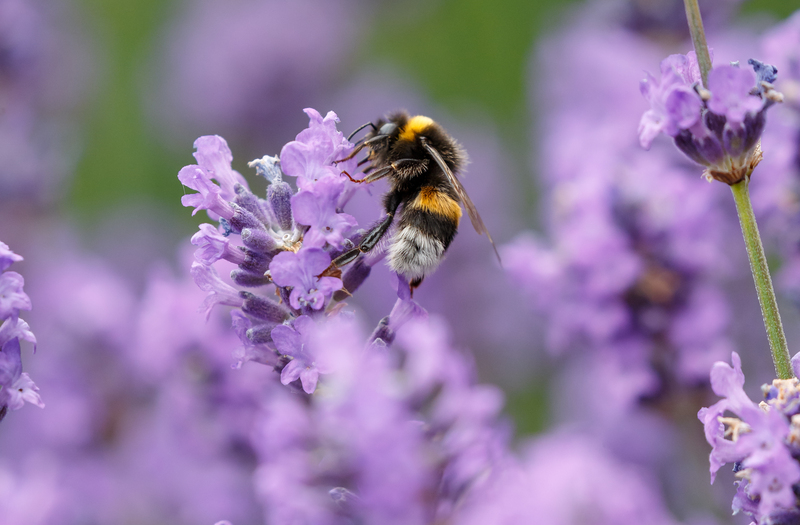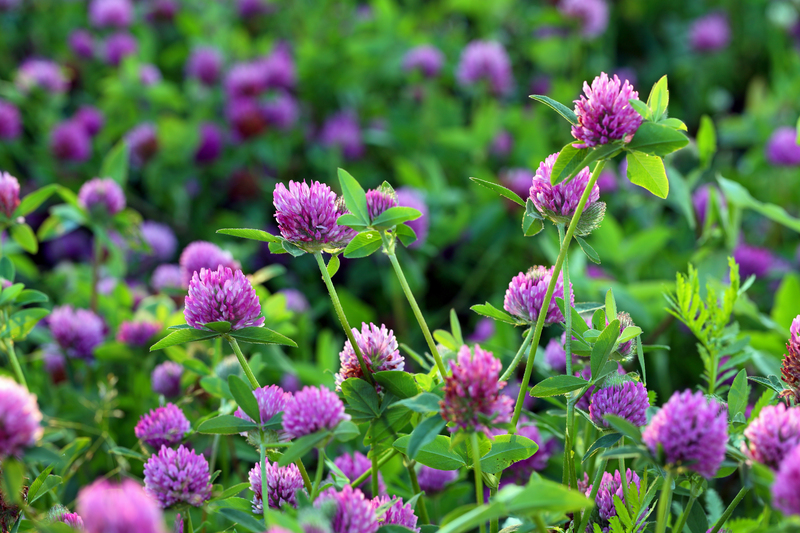Strategies to Shield Your Garden from Winter Woes
Posted on 03/07/2025
Strategies to Shield Your Garden from Winter Woes
Winter can be tough on gardens, with its biting winds, plummeting temperatures, and frosty mornings threatening the health and vitality of your beloved plants. However, gardeners can take proactive steps to ensure their outdoor spaces not only survive but also thrive through the chilliest months. Whether you're an experienced green thumb or a budding horticulturist, it's essential to understand the best strategies to shield your garden from winter woes. In this comprehensive guide, we'll explore effective methods, practical tips, and expert advice to safeguard your planting haven when the mercury drops.
The Importance of Winter Garden Protection
Cold stress, frost heave, and desiccation are just a few of the threats your winter garden faces. These elements can cause irreversible damage to roots, stems, and evergreen foliage. By employing thoughtful strategies to shield your garden from winter adversity, you not only preserve your investment in time and resources but also give your plants a strong start come spring.
Why Should You Prepare Your Garden for Winter?
- Minimize Plant Loss: Tender perennials, bulbs, and trees are at particular risk during sudden freezes.
- Promote Early Spring Growth: Well-protected plants can break dormancy in better shape, establishing themselves more vigorously.
- Prevent Soil and Erosion Damage: Winter rains and melting snow can compact or strip away valuable soil if left unprotected.
- Safeguard Structural Elements: Fences, raised beds, and trellises benefit from winter maintenance, ensuring they don't succumb to weathering.

1. Mulching: Your Garden's Winter Blanket
Mulching stands out as one of the simplest yet most effective ways to shield your garden from winter woes. It insulates soil, moderates temperature fluctuations, and locks in precious moisture that roots rely on.
Best Mulching Practices for Winter Protection
- Choose the Right Mulch: Organic mulches--such as shredded leaves, straw, wood chips, or compost--are ideal for garden beds.
- Layer Generously: Apply a layer of mulch 2-4 inches thick around perennials, shrubs, and trees. Avoid piling mulch directly against trunks to prevent rot.
- Refresh Mulch as Needed: Consider adding more material as the season progresses, especially after periods of heavy wind or rain.
2. Protecting Plants from Frost and Ice
Frost damage is one of the most common winter woes in the garden. Damage can occur when water inside plant cells freezes and bursts, causing dieback or blackened foliage.
Effective Frost Protection Strategies
- Utilize Garden Fleece or Burlap: Cover vulnerable plants with breathable fabrics on cold nights. Remove coverings during the day to prevent humidity build-up.
- Invest in Frost Blankets and Cloches: For tender seedlings or small shrubs, portable cloches or dome covers act as mini greenhouses to trap warmth.
- Water Before a Freeze: Moist soil retains heat better than dry, offering a bit more protection during overnight cold snaps.
- Move Containers Indoors or Closer to Your House: Potted plants are especially susceptible to freezing. Relocate them to a sheltered area, basement, or insulated garage where temperatures are less extreme.
3. Pruning: A Pre-Winter Essential
Strategic pruning not only tidies your garden but also strengthens plants against winter stress. Dead or diseased branches can become weighty liabilities when covered with ice or snow, risking entire plant health.
Pruning Guidelines for Winter Resilience
- Remove Damaged and Diseased Wood: This helps prevent rot and keeps winter winds from snapping weakened branches.
- Prune Only When Appropriate: Avoid pruning spring-flowering shrubs in late fall, as this may remove flower buds. Instead, focus on evergreens and late-summer bloomers.
- Disinfect Tools Between Cuts: This prevents the spread of pathogens as plants enter their dormant state.
4. Soil Preparation: Setting the Foundation
A healthy, robust garden starts with its soil. Winter is an ideal time to improve your soil structure, fertility, and drainage--three key elements for a flourishing landscape come spring.
Winter Soil Care Tips
- Add Organic Matter: Incorporate compost, aged manure, or leaf mold to enrich nutrient content and enhance drainage.
- Test and Amend Soil pH: Winter is perfect for conducting soil tests and applying lime or sulfur as recommended by results.
- Protect Bare Soil: Exposed soil is susceptible to erosion and weed invasion. Cover it with mulch or a winter cover crop like rye or clover.
5. Shielding Against Wind and Snow
Winter winds can rapidly desiccate foliage and batter the structure of your garden. Heavy snow, meanwhile, may weigh down branches or cause compacted soil. Both require proactive solutions.
Windbreaks and Support Systems
- Construct Temporary Windbreaks: Use burlap screens, snow fencing, or even stacked straw bales to deflect cold gales from vulnerable areas.
- Stake Young Trees and Tall Perennials: Use ties or supports to keep trunks upright under snow or icy conditions.
- Trim Tree Canopies: Remove weak or crossing limbs that could break under snow weight.
6. Winterizing Water Features and Tools
Don't forget to care for elements beyond your plant life. Ponds, birdbaths, and irrigation systems all need attention before temperatures plummet.
Garden Infrastructure Winter Care
- Drain and Store Hoses: Prevent damage by ensuring hoses, sprinklers, and irrigation lines don't freeze with water inside them.
- Insulate Outdoor Faucets: Foam covers help prevent burst pipes and water leaks.
- Clean and Store Tools Properly: Wash, dry, and oil garden tools before storing them in a protected, dry area to avoid rust and damage.
- Protect Ponds and Birdbaths: Add a floating ball or de-icer to keep a hole in the ice for wildlife; clean out debris to promote water quality.
7. Choosing the Right Winter-Resistant Plants
If you're in a region prone to harsh winters, employing winter garden protection strategies starts with selecting the right flora. Some plants are bred to withstand cold, wind, and snow with minimal intervention.
Hardy Plant Choices for Winter Gardens
- Evergreens: Boxwood, holly, and yew retain their leaves, adding year-round structure and shelter.
- Cold-Hardy Perennials: Hellebores, sedum, and ornamental grasses provide winter interest and resist frost damage.
- Deciduous Trees and Shrubs: Choose native species acclimated to local conditions for the best winter survival rates.
- Mulch-Loving Bulbs: Tulips, daffodils, and crocus overwinter securely under a protective blanket of mulch.
8. Monitoring and Adapting Through the Season
Shielding your garden from winter woes is not solely a one-time event; it's an ongoing process. Regularly assess the state of your garden and respond swiftly to changing weather.
Garden Monitoring Checklist
- Inspect Covers and Mulch: After high winds or snow, replace or straighten covers and replenish mulch as needed.
- Look for Water Accumulation: Clear drains and gutters to prevent ice dams or swampy patches that threaten roots.
- Watch for Animal Damage: Hungry critters may gnaw bark or dig for bulbs. Use protective barriers or repellents where necessary.
9. Planning Ahead: Setting Your Garden up for Spring Success
Proper winter garden protection doesn't just minimize cold-weather issues. It actively builds the foundation for an explosion of growth and color in spring. Every action you take now has a cumulative benefit.
Spring Preparation Tips Starting in Winter
- Order Seeds and Supplies Early: Take inventory now so you're ready to plant as soon as the soil warms.
- Sketch a Garden Plan: Winter is a great time to dream and strategize for new beds, vegetable patches, or landscaping features.
- Begin Indoor Seed Starting: For a jump on the growing season, sow seeds indoors under lights according to best timing for your region.
- Continue Composting: Don't stop adding kitchen and garden waste to your compost pile--it breaks down even during the cold months and enriches next year's soil.

10. Common Mistakes to Avoid During Winter Garden Protection
Missteps can compromise all your hard work. Here's what to look out for to avoid sabotaging your own garden winterization efforts.
Winter Garden Care Pitfalls
- Using Too Much or Too Little Mulch: Over-mulching can smother roots, while too little offers inadequate protection.
- Neglecting to Water: Plants still need moisture in winter, especially evergreen types. Don't let them dry out completely.
- Delaying Protection: Waiting until after a cold snap can mean irreversible damage. Prepare early--before the ground freezes.
- Improper Pruning Timing: Pruning at the wrong time can cut off flower buds or encourage new growth that's vulnerable to frost.
Conclusion: Embrace Winter, Empower Your Garden
With thoughtful planning, diligent care, and a host of accessible winter garden protection techniques, you can confidently face the colder months knowing your garden is safe and well-prepared. From mulching and pruning to monitoring and spring planning, every step contributes to the resilience and enduring beauty of your outdoor sanctuary.
So, arm yourself with these strategies to shield your garden from winter woes, and watch your space not only withstand the chill but emerge stronger, healthier, and more vibrant--season after season.
Further Reading:
- Winter-Proof Gardening: A Month-by-Month Guide
- Choosing Cold-Hardy Plants for Your Climate Zone
- DIY Mulch and Compost Projects for Beginners
Winter may be harsh, but with the right know-how, your garden will flourish year-round.

